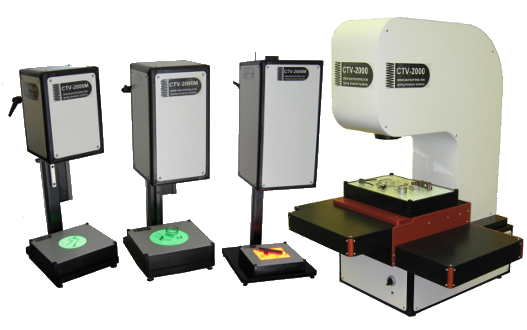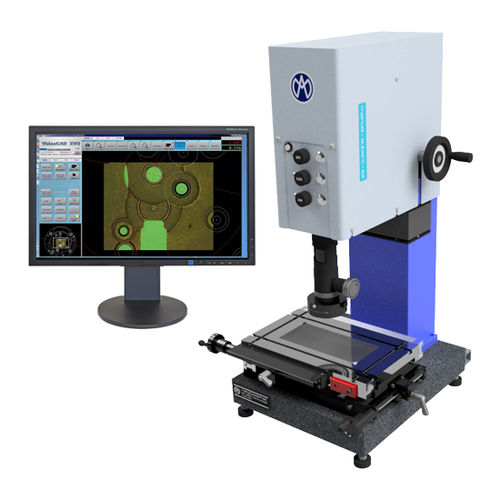A complete walkthrough to deploying an optical measurement system in your facility
Wiki Article
The Role of Optical Measurement Solutions ahead of time Metrology Strategies
Optical dimension systems have actually changed metrology, bringing a level of precision that was when unthinkable. As you discover further, you'll uncover how these systems are forming the future of dimension and high quality control.The Evolution of Width: A Historic Viewpoint
As you check out the history of metrology, you'll find that its advancement mirrors mankind's mission for accuracy and standardization. From ancient worlds using body components as units of dimension to the advancement of standardized weights and actions, each action shows our need for precision. The Egyptians developed the pyramids utilizing specific measurements, while the Romans advanced design with their advanced measuring devices.Throughout the Renaissance, scientific advancements changed the emphasis towards much more empirical approaches, leading the way for modern metrology. The introduction of the metric system in the late 18th century marked a significant turning point, developing global requirements. Throughout the 20th century, technological advancements additionally transformed assessment, enabling highly precise measurements in numerous fields.
Today, assessment remains to develop, incorporating digital modern technology and automation. This background highlights not just the importance of measurement yet additionally our unrelenting search of boosting precision and consistency in our increasingly intricate world.
Concepts of Optical Dimension Equipments
Comprehending the principles behind optical measurement systems is essential for precise cause width. You'll intend to take into account fundamental optical concepts, dimension precision elements, and reliable system calibration techniques. Each of these components plays a crucial duty in guaranteeing your dimensions are specific and reputable.Fundamental Optical Principles
While discovering optical measurement systems, you'll come across basic optical concepts that develop the foundation of exact information procurement. Light acts in predictable means, and understanding these habits-- like reflection, diffraction, and refraction-- is crucial for effective measurements. By mastering these principles, you'll be furnished to take advantage of optical innovations efficiently, leading the means for advancements in width and ensuring your dimensions are both dependable and repeatable.Measurement Accuracy Variables
To accomplish high measurement accuracy in optical systems, several factors enter play, influencing the dependability of your results. Initially, the quality of the optical components matters considerably. Top notch lenses and detectors decrease aberrations and sound, ensuring your dimensions are exact. Second, ecological problems like temperature level and humidity can influence measurements, so keeping a secure environment is necessary. Third, the placement of the optical system is critical; also small imbalances can bring about substantial mistakes. The wavelength of light utilized impacts the resolution and precision of your measurements. By attending to these factors, you can improve the total efficiency of your optical measurement systems, bring about more precise and reliable outcomes in your metrology applications.System Calibration Methods
Accomplishing high dimension accuracy is just part of the formula; correct system calibration techniques are equally important in optical dimension systems. To assure your system supplies trusted results, you ought to consistently calibrate it using conventional reference materials. Begin by readjusting the optical elements, like lenses and mirrors, to minimize methodical mistakes. Next off, utilize known dimensions to validate the system's output and make essential improvements. It's likewise vital to represent ecological aspects-- temperature and humidity can affect measurements. Execute a regular calibration timetable to keep consistency in time. Finally, record all calibration treatments and results; this will assist you track efficiency and attend to any type of drift in precision. With these techniques, you'll enhance the dependability of your optical measurement system.
Key Technologies Behind Optical Measurement
Optical measurement systems rely upon several crucial technologies that boost accuracy and performance in assessment. One important innovation is interferometry, which uses the interference of light waves to gauge little variations and surface irregularities with extreme accuracy. You'll also discover laser scanning systems, which catch detailed 3D data of things quickly, making them very useful for dimensional analysis.Furthermore, CCD and CMOS sensing units play a significant role in converting light right into electrical signals, enabling high-resolution imaging and accurate dimensions. Advanced algorithms for picture handling better enhance dimension precision by examining data in actual time, filtering system out sound and enhancing attributes.
Ultimately, fiber optics supply versatility and the ability to measure in hard settings while keeping signal integrity. By leveraging these innovations, you can accomplish exceptional lead to your metrology tasks, ensuring that your measurements are both accurate and dependable.
Applications of Optical Dimension in Sector
As markets increasingly demand precision and efficiency, the applications of optical measurement systems have ended up being essential throughout different sectors. In production, these systems help you keep an eye on measurements and resistances in real-time, making certain quality control without lengthy hand-operated checks. In the automotive sector, optical measurements assist in aligning components with accuracy, improving security and efficiency.In electronics, you're making use of optical methods to examine min functions on circuit card, detecting defects that can bring about failings. The aerospace field gain from non-destructive screening techniques, allowing you to analyze products and parts without jeopardizing their stability.
Optical dimension likewise plays an essential function in textiles, making sure fabric dimensions fulfill precise specifications. optical measurement system. With their ability to offer high-resolution data swiftly, these systems empower you to make enlightened choices, streamline procedures, and ultimately drive innovation across your industry
Enhancing Precision and Effectiveness in Measurements
When you consider enhancing accuracy in dimensions, accuracy in your dimension techniques is vital. By enhancing these processes, you can attain quicker results without giving up quality. Let's check out how embracing innovative optical measurement systems can raise both accuracy and effectiveness in your job.Accuracy in Measurement Methods
Accuracy in measurement strategies is essential for achieving reputable results in assessment, particularly since small disparities can lead to substantial errors. By making use of innovative optical measurement systems, you can boost the precision of your dimensions. In addition, exact dimensions allow you to keep high quality control, making certain that products satisfy rigid requirements.Enhancing Measurement Processes
you can try here To improve accuracy and efficiency in measurements, enhancing your measurement processes is important. Start by embracing optical dimension systems that give real-time data, minimizing the time spent on hands-on recording. These systems usually incorporate perfectly with existing software, permitting you to automate information collection and analysis.Following, systematize your measurement methods. By implementing constant procedures, you minimize variability and improve repeatability. Do not forget to consistently calibrate your tools to ensure its precision.

The Influence of Optical Measurement on R & D
As researchers venture to press the boundaries of development, optical dimension systems have actually become indispensable devices in the advancement procedure. These systems supply you with exact, real-time information that enhances your capability to evaluate intricate products and frameworks. In different areas, from biotechnology to aerospace, you depend on optical measurements to maximize styles and enhance product efficiency.
With high-resolution imaging and non-contact approaches, you can reduce example disruption, enabling even more precise results. This capability to catch minute details increases your R&D cycle, letting you repeat layouts quickly and efficiently. Optical dimension promotes collaboration throughout disciplines, as the data generated is commonly easily interpretable and shareable.
Inevitably, integrating optical measurement systems into your research not only increases performance however additionally deepens your understanding of the sensations you research. By leveraging these innovative methods, you're better furnished to innovate and remain ahead in a competitive landscape.
Future Patterns in Optical Dimension Solutions
With the fast improvement of innovation, you're likely to see significant changes in optical measurement systems that will redefine their application across different industries. You'll discover an approach increased automation and combination of expert system, enabling real-time information analysis and boosted precision. Miniaturization is an additional pattern; portable devices will allow dimensions in tighter areas, making them ideal for fields like aerospace and biomedical applications.Expect to see systems that can run in challenging settings, supplying trustworthy measurements in extreme conditions. As these innovations converge, you'll locate that optical measurement systems not just boost precision however additionally enhance workflows, inevitably driving development and effectiveness in your jobs.
Regularly Asked Inquiries
Exactly How Do Optical Dimension Solutions Compare to Traditional Dimension Techniques?
Optical measurement systems supply greater precision and faster results contrasted to standard methods. You'll discover they record more information factors properly, decreasing human error and boosting integrity, making them a favored selection in various applications.What Industries Benefit A Lot Of From Optical Measurement Solutions?
You'll locate industries such as aerospace, vehicle, and electronic devices profit most from optical measurement systems. These markets rely upon accurate dimensions to guarantee top quality and efficiency, enhancing efficiency and lowering prices with innovative technology.
Are Optical Dimension Systems Expensive to Carry Out?
Optical dimension systems can be costly to implement, but their precision and efficiency frequently validate the price. Purchasing such technology can lead to considerable lasting financial savings and renovations site in quality throughout different applications.What Skills Are Needed to Run Optical Dimension Solutions?
To operate optical measurement systems, you'll require solid logical skills, focus to detail, and proficiency in software application tools. Experience with optics and an understanding of measurement principles my latest blog post will likewise improve your effectiveness and efficiency.Exactly How Do Environmental Factors Impact Optical Measurements?
Ecological variables like air, humidity, and temperature high quality can distort optical measurements. You'll discover variations in precision due to light disturbance or refraction. optical measurement. Keeping secure problems is necessary for precise and reliable optical measurement results
Verdict
In recap, optical measurement systems are revolutionizing assessment by providing unmatched accuracy and effectiveness. As you check out future patterns, you'll see how the assimilation of AI and automation will certainly proceed to elevate measurement methods, driving innovation and improving quality control.Accomplishing high measurement precision is only part of the formula; proper system calibration techniques are equally vital in optical measurement systems.When you believe concerning enhancing accuracy in measurements, precision in your dimension strategies is important. By utilizing advanced optical measurement systems, you can enhance the accuracy of your dimensions.To enhance precision and efficiency in dimensions, streamlining your measurement procedures is essential. How Do Optical Measurement Equipments Compare to Typical Dimension Techniques?
Report this wiki page